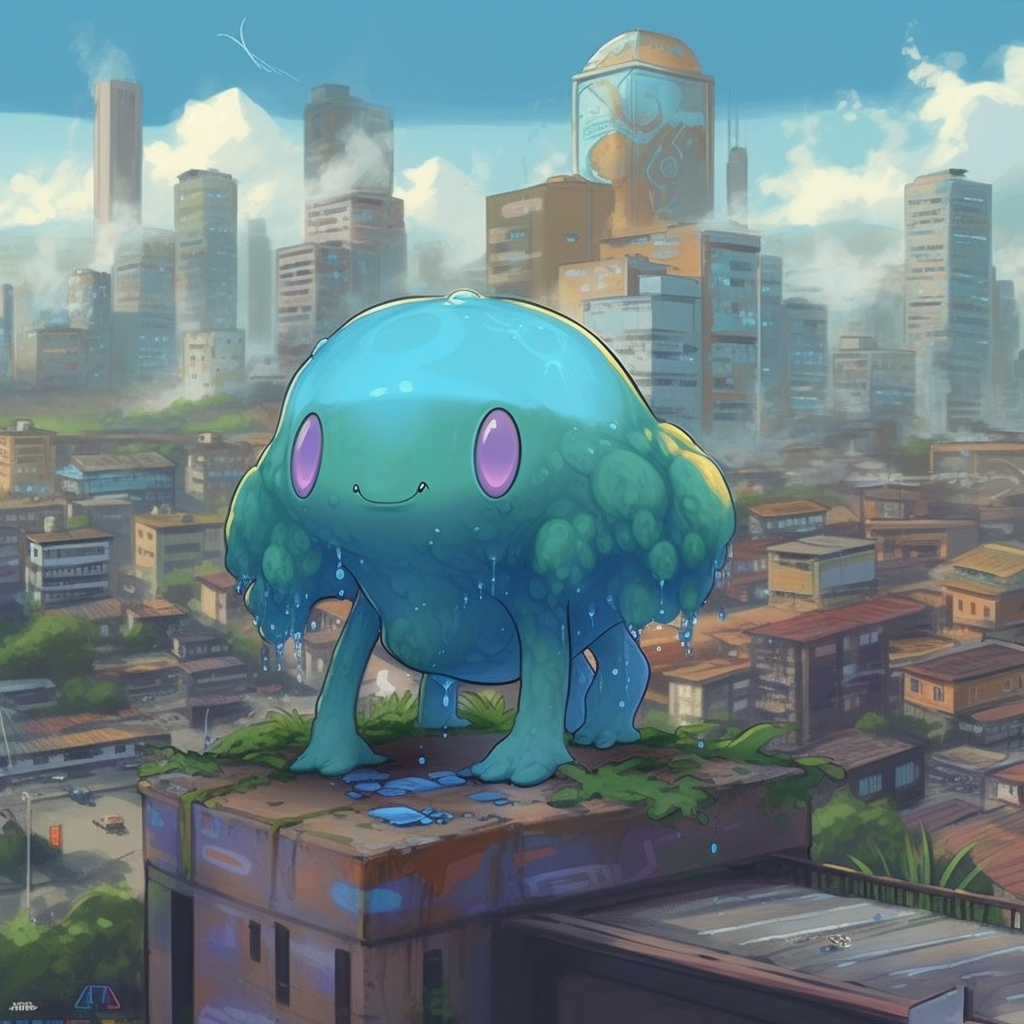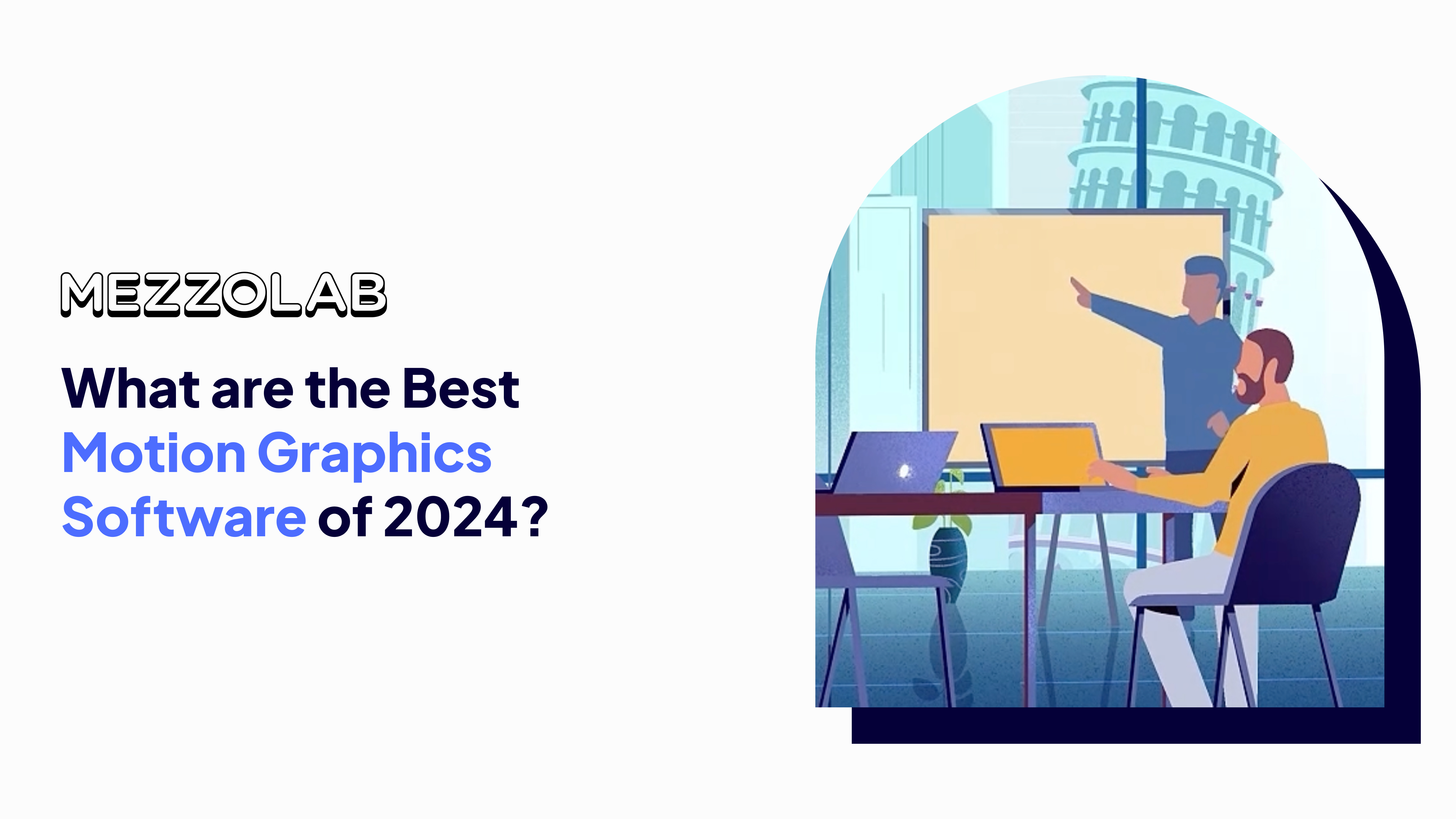AI Animation - Use Cases Guide

AI is a rapidly evolving field that is transforming the way we create and consume animated content. This technology is not only revolutionizing the animation industry but also has significant implications for tech companies looking to leverage AI for their creative processes.
What is AI Animation?
AI animation refers to the use of artificial intelligence technologies to automate and enhance the process of creating animated content. This includes everything from character design and movement to background creation and scene transitions. The most advanced AI animation tools can even generate animations from scratch, based on a set of input parameters or a pre-existing script.
The Rise of AI Generators

In recent years, we've seen the emergence of AI generators. These are software tools that use AI algorithms to automate the process of creating animations. They can generate animations quickly and efficiently, making it easier for tech companies to produce high-quality animated content without the need for extensive animation expertise.

Tools like Stable Diffusion, Dall-E, or MidJourney are not only fun to play with but can actually be used in the future for creating full animations.
The Benefits of AI for creative

There are several key benefits to using AI for animation.
Here are a few of the most significant:
Efficiency and Speed
One of the main advantages of AI is its efficiency. Traditional animation is a time-consuming process that requires a high level of skill and expertise. With AI, much of this process can be automated, resulting in faster production times and lower costs.
Scalability
AI animation tools are highly scalable. They can generate a large number of animations in a short amount of time, making them ideal for tech companies that need to produce a lot of animated content quickly.
Customization
AI animation generators can create animations that are tailored to specific requirements. This means that tech companies can create personalized animations that are perfectly suited to their brand and audience. With AI you can even create unique characters that you can use not only as images but as actual animated characters.

Accessibility
AI animation tools are becoming increasingly accessible. They are easy to use and require little to no animation expertise, making them a great option for tech companies that don't have a dedicated animation team.
The Drawbacks of AI Animation

Despite its many benefits, there are also some drawbacks to using AI for video. Here are a few to consider:
Lack of Creativity

One of the main criticisms of AI videos is that it lacks the creativity and originality of human-made animations. While AI can generate videos based on predefined parameters, it can't replicate the unique creative vision of a human animator.
Limited Flexibility

While AI animation tools are becoming more advanced, they still have limitations. They may not be able to handle complex animation tasks or create animations with the same level of detail and nuance as a human animator.
Dependence on Data

AI tools rely on data to generate animations. This means that the quality of the animations they produce is dependent on the quality of the data they are fed. If the data is poor or incomplete, the resulting animations may be subpar.
AI Animation in Tech Companies
Tech companies are increasingly turning to AI to create engaging and innovative content. Whether it's for marketing purposes, user interface design, or virtual reality experiences, AI animation offers a powerful and efficient way to create high-quality animations.
Explainer Videos

Explainer videos are a popular tool for tech companies looking to communicate complex ideas in a simple and engaging way. With AI videos, creating these videos is easier and more efficient than ever. For more information on explainer videos, check out our comprehensive guide.
Choosing an AI Animation Tool
When choosing an AI tool, it's important to consider your specific needs and requirements. Some tools are better suited to certain types of animations or styles, so it's worth doing your research before making a decision.
Types of AI Animation Tools
There are various types of AI video tools available, each with its own strengths and weaknesses. Some are designed for 2D videos, while others are better suited to 3D videos. Some tools are geared towards beginners, while others offer more advanced features for professional animators. For a detailed breakdown of the different types of explainer videos that exist in 2023, visit our blog post.
Measuring the ROI of Animation

One of the key considerations for tech companies using AI video is the return on investment (ROI). This involves measuring the cost of using AI tools against the benefits they provide in terms of efficiency, scalability, and quality. To help you calculate the ROI of your explainer videos, we've created a handy ROI calculator.
The Future of AI Animation

The future of AI looks promising. As AI technologies continue to evolve, we can expect to see even more advanced and sophisticated AI animation tools. These will offer greater customization options, improved efficiency, and even better quality animations.
User Experience
AI animation can play a crucial role in enhancing user experience. Animated content can make interfaces more engaging and intuitive, improving user satisfaction and retention. Tech companies can leverage AI video to create dynamic and interactive user interfaces that stand out from the competition.
Virtual Reality
Virtual reality (VR) is another area where AI video is making a big impact. AI can be used to create immersive and realistic VR experiences, opening up new possibilities for tech companies in fields like gaming, education, and training.
Marketing
In the realm of marketing, AI video can be a powerful tool. Animated content can grab attention, convey information effectively, and evoke emotional responses. Tech companies can use AI animation to create compelling marketing materials that resonate with their target audience.
Branding
Branding is another area where AI video can shine. Animated content can be tailored to reflect a company's brand identity, helping to build brand recognition and loyalty. Tech companies can use AI video to create consistent and memorable brand experiences.
Storytelling
Storytelling is a key aspect of effective communication, and AI video can enhance this process. AI can be used to create engaging and compelling narratives, making it a valuable tool for tech companies looking to tell their story in a unique and impactful way.
Data Visualization
Data visualization is a crucial task for many tech companies, and AI animation can make this process more engaging and intuitive. Animated data visualizations can make complex data more understandable and memorable, helping to drive informed decision-making.
Training
Training is another area where AI video can be highly beneficial. Animated training materials can be more engaging and effective than static content, improving learning outcomes. Tech companies can use AI video to create dynamic and interactive training materials that enhance learning and retention.
Customer Engagement
Customer engagement is a key goal for any tech company, and AI video can help achieve this. Animated content can grab attention, evoke emotions, and encourage interaction, making it a powerful tool for boosting customer engagement.
Social Media
Social media is a major platform for tech companies, and AI video can help them stand out in this crowded space. Animated content is more likely to be shared and engaged with, increasing reach and visibility. Tech companies can use AI video to create eye-catching social media content that resonates with their audience.
Product Demos
Product demos are a crucial part of the sales process for many tech companies, and AI video can make these demos more engaging and effective. Animated demos can clearly illustrate product features and benefits, helping to drive sales and conversions.
User Interface Design
User interface design is another area where AI video can have a big impact. Animated elements can make interfaces more intuitive and enjoyable to use, improving user satisfaction and retention. Tech companies can leverage AI video to create dynamic and interactive user interfaces that stand out from the competition.
E-commerce
In the e-commerce space, AI video can be used to create engaging product videos, interactive shopping experiences, and dynamic advertising content. This can help to increase conversion rates, boost customer engagement, and drive sales.
Gaming
In the gaming industry, AI video can be used to create realistic and immersive gaming experiences. This can enhance gameplay, improve player engagement, and drive the success of a game.
Healthcare
In the healthcare sector, AI video can be used to create educational materials, patient engagement tools, and training resources. This can improve patient understanding, enhance healthcare delivery, and support healthcare professionals.
Education

In the education sector, AI video can be used to create engaging learning materials, interactive educational experiences, and effective training resources. This can enhance learning outcomes, improve student engagement, and support educators.
Entertainment
In the entertainment industry, AI video can be used to create engaging content for films, TV shows, and online platforms. This can enhance storytelling, improve viewer engagement, and drive the success of a production.
Research
In the field of research, AI video can be used to visualize complex data, illustrate research findings, and create engaging presentations. This can enhance understanding, improve communication, and support research activities.
Manufacturing
In the manufacturing sector, AI video can be used to create training materials, product demos, and safety videos. This can enhance worker safety, improve productivity, and support manufacturing processes.
Real Estate
In the real estate sector, AI video can be used to create virtual tours, property videos, and marketing materials. This can enhance property listings, improve customer engagement, and drive sales.
Finance
In the finance sector, AI video can be used to create educational materials, customer engagement tools, and data visualizations. This can enhance customer understanding, improve financial services, and support financial professionals.
Automotive Industry
In the automotive industry, AI-generated visuals can be used to create realistic 3D models of vehicles, allowing customers to explore different models, colors, and features in a virtual environment. This can enhance the customer experience, improve engagement, and drive sales.
Architecture Industry
In the architecture industry, AI-generated visuals can be used to create detailed 3D models and virtual walkthroughs of architectural designs. This can enhance communication with clients, improve design processes, and support project planning and execution.
Fashion Industry
In the fashion industry, AI-generated visuals can be used to create virtual fashion shows, 3D models of clothing items, and interactive shopping experiences. This can enhance customer engagement, improve online shopping experiences, and drive sales.
Travel Industry

In the travel industry, AI-generated visuals can be used to create virtual tours of destinations, interactive travel guides, and immersive travel experiences. This can enhance customer engagement, improve travel planning, and drive bookings.
Sports Industry
In the sports industry, AI-generated visuals can be used to create realistic simulations of sports events, interactive training materials, and engaging fan experiences. This can enhance player performance, improve fan engagement, and drive the success of sports events.
Food Industry
In the food industry, AI-generated visuals can be used to create realistic 3D models of food items, interactive cooking demonstrations, and engaging marketing materials. This can enhance customer engagement, improve culinary experiences, and drive sales.
Agriculture Industry
In the agriculture industry, AI-generated visuals can be used to create detailed 3D models of farm layouts, interactive agricultural simulations, and engaging educational materials. This can enhance farm management, improve agricultural practices, and support education and training.
Energy Industry
In the energy industry, AI-generated visuals can be used to create detailed 3D models of energy systems, interactive simulations of energy processes, and engaging educational materials. This can enhance energy management, improve energy efficiency, and support education and training.
Logistics Industry
In the logistics industry, AI-generated visuals can be used to create detailed 3D models of logistics networks, interactive simulations of logistics processes, and engaging educational materials. This can enhance logistics management, improve efficiency, and support education and training.
Publishing Industry
In the publishing industry, AI-generated visuals can be used to create engaging book covers, interactive book trailers, and dynamic marketing materials. This can enhance reader engagement, improve book sales, and drive the success of publishing campaigns.
Construction Industry
In construction, automated visuals can create detailed 3D models of building projects, allowing for better planning and visualization of the final product. This can enhance project management, improve client communication, and aid in safety training procedures.
Environmental Sector
For the environmental sector, these visuals can be used to simulate the impact of various environmental factors on ecosystems or to visualize climate data. This can support research, enhance public awareness campaigns, and aid in policy development.
Retail Industry
In retail, automated visuals can create engaging product displays or virtual store tours, enhancing the online shopping experience and driving sales.
Telecommunications
In telecommunications, these visuals can be used to visualize network structures or signal coverage, aiding in network planning and management.
Public Safety
For public safety, it can be used to create realistic training simulations for emergency response teams or to visualize crime data for law enforcement agencies.
Tourism
In tourism, these visuals can create immersive virtual tours of attractions, enhancing promotional efforts and aiding in visitor planning, all in just a few clicks.
Education
In education, automated visuals can be used to create engaging educational content, such as interactive diagrams or simulations, enhancing learning outcomes and student engagement.
Real Estate
In real estate, these visuals can create detailed 3D tours of properties, enhancing listings and aiding in buyer decision-making.
Insurance
In insurance, automated visuals can be used to visualize risk data or create detailed accident simulations, aiding in claims processing and risk assessment.
Media and Entertainment
In media and entertainment, these visuals can create engaging content for films, TV shows, and online platforms, enhancing storytelling and viewer engagement.
Non-Profit Sector
For non-profit organizations, automated visuals can be used to create engaging promotional materials such as animation videos, or to visualize impact data, enhancing fundraising efforts and donor engagement.
Pharmaceutical Industry
In the pharmaceutical sector, automated visuals can be used to create detailed 3D models of molecular structures, enhancing research efforts and aiding in drug development.
Cosmetics Industry
In the cosmetics industry, these visuals can create engaging product demonstrations or virtual makeovers, enhancing marketing efforts and driving sales.
Hospitality Industry

In hospitality, automated visuals can create immersive virtual tours of accommodations or interactive customer service experiences, enhancing guest satisfaction and driving bookings.
Fitness Industry
In fitness, these visuals can be used to create engaging workout demonstrations or interactive fitness trackers, enhancing user engagement and driving membership sales.
Transportation Industry
In transportation, AI generated animations can be used to visualize route data or create detailed vehicle simulations, aiding in route planning and vehicle design.
Legal Sector
In the legal sector, these visuals can be used to visualize case data or create detailed accident simulations, aiding in case preparation and courtroom presentations, in just a few clicks.
Human Resources
In human resources, automated visuals can be used to create engaging training materials or interactive employee onboarding experiences, enhancing employee engagement and retention.
Event Planning
In event planning, these ai images can create immersive virtual tours of event venues or interactive event schedules, enhancing event promotion and attendee planning.
Interior Design
In interior design, ai art can create detailed 3D models of interior spaces, enhancing design planning and client communication.
Government Sector
In the government sector, these visuals can be used to visualize public data or create engaging public awareness campaigns, enhancing public services and citizen engagement.
Research and Development
In research and development, automated visuals can be used to visualize complex data sets or create detailed product simulations, enhancing research efforts and product development.
Advertising Industry
In advertising, automated visuals can create engaging ad content or interactive ad experiences, enhancing campaign effectiveness and consumer engagement.
Cybersecurity
In cybersecurity, these visuals can be used to visualize network vulnerabilities or create detailed threat simulations, aiding in threat detection and response planning.
Veterinary Medicine

In veterinary medicine, automated visuals can create detailed 3D models of animal anatomy, enhancing diagnostic capabilities and aiding in treatment planning.
Archaeology

In archaeology, these visuals can be used to create detailed 3D models of archaeological sites or artifacts, enhancing research efforts and public engagement.
Space Exploration
In space exploration, automated visuals can create detailed 3D models of celestial bodies or interactive mission simulations, enhancing research efforts and public engagement.
Music Industry
In the music industry, these visuals can create engaging music videos or interactive concert experiences, enhancing artist promotion and fan engagement.
Sports Equipment Manufacturing
In sports equipment manufacturing, automated visuals can be used to create detailed 3D models of sports equipment, enhancing product design and consumer engagement.
Waste Management
In waste management, these visuals can be used to visualize waste data or create interactive recycling guides, enhancing waste management efforts and public engagement.
Mental Health Services
In mental health services, automated visuals can be used to create engaging therapeutic resources or interactive mental health trackers, enhancing patient engagement and treatment outcomes.

Urban Planning
In urban planning, these visuals can be used to visualize urban data or create detailed city simulations, aiding in urban planning and public engagement.

AI animation is a powerful tool that can benefit tech companies in numerous ways. While there are some drawbacks to consider, the potential benefits of this technology are significant.
As AI continues to evolve, we can expect to see even more innovative and impactful applications of AI animation in the future.




